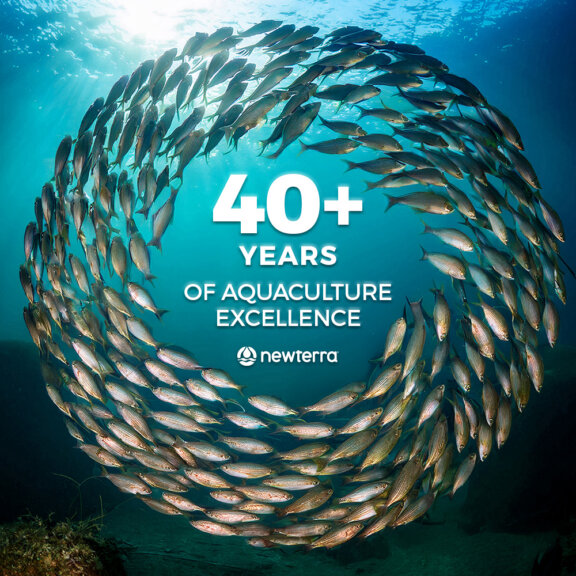Process aerators update historic city’s treatment plant
St. Augustine, Fla., was founded by the Europeans in 1565, making it the oldest city in the U.S. Despite its history, this Floridian city has combined graceful aging and environmental zeal into a perfect blend of sustainability. When this pristine community started experiencing problems with its wastewater treatment system, it found a solution in Aeration Industries’ Aire-O2 Triton process aerators and mixers.
St. Augustine’s original municipal wastewater treatment plant (WWTP) was built in the 1950s and has not been upgraded since 1986. Becase it boasts great weather, beaches and a myriad of attractions for locals and 2 million tourists to enjoy year-round, keeping the city’s wastewater treatment facility in top-notch condition was a priority.
St. Augustine was up to the challenge.
The city’s treatment plant consists of two oxidation ditches in a parallel-flow system. The design flow is 5 million gal per day (mgd); approximately 95% of which is domestic sewage. Current average influent concentrations are 190 mg/L BOD, 180 mg/L TSS and 34 mg/L NH3-N.
System Transition
In 2007, St. Augustine’s treatment plant started having difficulties meeting its ammonia discharge levels. Because the city discharges into the Matanzas Intracoastal Waterway, its wastewater treatment facility has very strict discharge permit limits. The old splashing disc aeration system needed either an immediate boost or replacement in order to get the treatment plant back into compliance.
The first two 10hp process aerators and mixers were installed in August 2007, one in each ditch, to supplement the existing disc aerators. The addition of these units brought the plant back into compliance. Discharge levels for NH3-N fell from 14 mg/L to 2.5 mg/L within a few days. Other effluent values decreased as well, with BOD averaging 3.3 mg/L and TSS averaging 2.9 mg/L.
Operating & Energy Savings
“I’m really into process control,” said Plant Manager George Lomax. “What I like about the Triton process aerators is that you can separate the aeration and the mixing, which helps me really control the process better.”
The aerator and mixers can be utilized for process control because of their dual functionality. Coupled with dissolved oxygen (DO) meters, the blowers can be automatically turned off when the DO reaches a chosen set point, while the mixer can remain in operation. This can save on electricity costs.
Lomax enjoyed the energy savings the first two 10-hp process aerators provided. He replaced 50 hp of disc aerators with 20 hp of the process aerators and mixers. “That’s almost half the horsepower,” he emphasized.
The process aerator’s strong mixing ensures uniform dissolved oxygenation throughout the oxidation ditch and also keeps the mixed-liquor suspended solids in full suspension.
Satisfied with the new equipment, St. Augustine’s plant staff decided to add more process aerators to the wastewater treatment plant the following year. Two 30hp units were added in September 2008 and another set in November 2008.
Upgrade Completion
Each of the oxidation ditches employs a three-ring process channel system, and each ditch is now equipped with 220 hp of the process aerators and mixers.
“The outer channels have 2- to 40-hp units and we run that channel anoxic,” Lomax said. “The center has 2- to 40-hp units and that channel runs aerobic with 1 ppm of dissolved oxygen. The inner channel has 2- to 30-hp units that are aerobic at 1.2 ppm of dissolved oxygen.”
The current plant flow is 3 mgd, and the final total of 12 process aerators now affords the facility the “turn-down capability” of multiple units to match the varying influent flows and loadings by shutting down units to realize more energy savings.
Community Friendly
The St. Augustine wastewater treatment plant is located close to the community, so being a good neighbor is important. Chief Operator Steve Mier likes the process aerator’s subsurface injection better than the rotating discs for air quality reasons.
“These aerators don’t splash or throw any wastewater into the air—the water stays in the tank,” Mier said. “That’s very important on windy days.”
“Working around discs on windy days can get kind of nasty with the wastewater splashing,” he said. “These subsurface aerators are very quiet, too.”
Because the new process aerators can be installed without draining the ditches, and due to the ease of installation and assembly of the units, St. Augustine’s staff was able to perform the majority of the work in-house, which provided a substantial cost savings to the city. The final completion of the aerator retrofit in spring 2011 reflects this “Oldest City’s” tradition of maintaining a fit and sustainable treatment facility.



